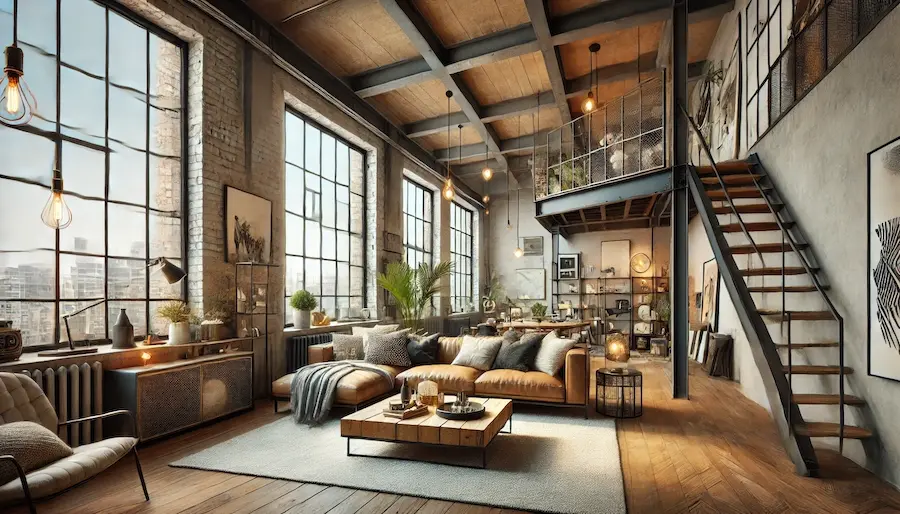A loft-style living room embodies an industrial aesthetic characterized by open floor plans, high ceilings, and raw architectural elements, creating a spacious and contemporary environment.
History and Origins of Loft-Style Design
Loft-style design emerged in the mid-20th century when industrial buildings, such as warehouses and factories, were repurposed into residential spaces. This adaptive reuse led to interiors that retained structural features like exposed brick walls, visible ductwork, and expansive windows, giving rise to the distinctive industrial-chic aesthetic associated with lofts.
Key Features of a Loft-Style Living Room
- Open Floor Plan: Loft-style living rooms typically feature minimal internal walls, fostering a sense of openness and flexibility in space utilization.
- Exposed Structural Elements: Visible beams, brick walls, and ductwork are celebrated design components that contribute to the industrial charm of loft interiors.
- High Ceilings: Generous ceiling heights enhance the airy atmosphere and allow for creative vertical design solutions, such as mezzanines or lofted areas.
- Large Windows: Expansive windows permit abundant natural light, accentuating the spaciousness and highlighting interior details.
- Industrial Materials: Incorporation of materials like metal, concrete, and reclaimed wood reinforces the industrial aesthetic inherent to loft-style design.
Applications of Loft-Style Design in Living Rooms
- Furniture Selection: Opt for modern, minimalist furniture with clean lines to complement the industrial backdrop. Incorporating vintage or reclaimed pieces can add character and warmth.
- Spatial Zoning: Use area rugs, furniture arrangements, or open shelving to delineate functional areas within the open layout, such as separating the living space from the dining or workspace.
- Lighting Fixtures: Industrial-style lighting, such as pendant lights with metal finishes or exposed bulbs, enhances the loft aesthetic and provides functional illumination.
- Artistic Elements: Incorporate large-scale artwork or sculptures to utilize wall space effectively and infuse personality into the living area.
Considerations When Designing a Loft-Style Living Room
- Acoustic Management: The hard surfaces typical in lofts can lead to sound reverberation. Introducing textiles like area rugs, curtains, and upholstered furniture can help absorb sound and improve acoustics.
- Temperature Regulation: Large windows and open spaces may affect temperature control. Consider appropriate window treatments and efficient HVAC systems to maintain comfort.
- Personalization: While maintaining the industrial theme, incorporate personal touches through decor, plants, or color accents to create a welcoming and individualized space.
Conclusion
A loft-style living room offers a unique blend of industrial heritage and modern living, characterized by open spaces and distinctive architectural features. By thoughtfully integrating key design elements and addressing practical considerations, you can create a functional and aesthetically pleasing loft-inspired living area.
